Why Do Elk “Bugle and Run”?
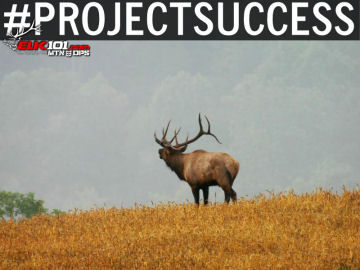
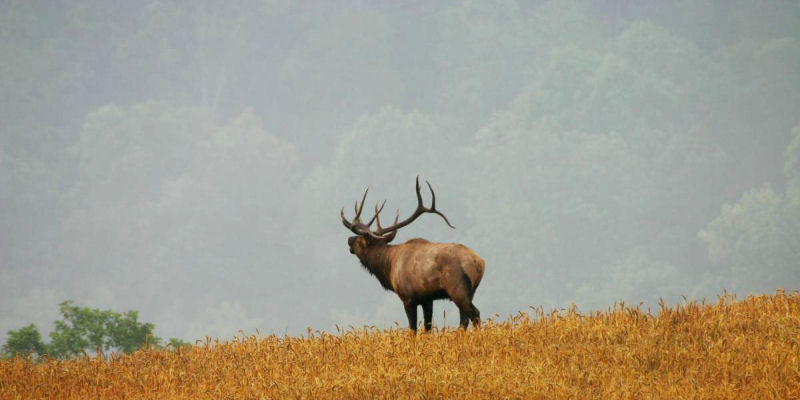
In the last #PROJECTSUCCES post (Are You A Control Freak), I mentioned that one of the most common frustrations associated with calling elk is bulls rounding up their cows and leaving…especially when you get in close! I also mentioned that it’s important to ask the question, Why? Why did he just round up his cows and leave? I truly feel that there is always a reason a bull reacts one way or another, and in this case, there are a handful of options to consider.
When you are calling to a bull and trying to entice him into your setup, put yourself in the bull’s shoes. What is going through his mind? What can you do (or say) that is going to make him come to you? If you were an elk, what could another elk do or say to make you go to him? What are some of the things that might prevent the bull from coming in? When you break down these situations in such a way, answers – and the associated solutions – become more recognizable.
The main reasons I’ve found that a bull will round up his cows and leave usually involve one of the following:
1) He has been pressured over and over by hunters and is wary.
2) He is a younger bull with cows that doesn’t want to lose his harem to a bigger bull.
3) He is a bigger bull that has established his harem and is focused on his cows that are coming into estrous.
4) The elk’s senses are alerting them to possible danger (seeing movement that is out of place, hearing noises that aren’t natural, or smelling stinky humans).
Outside of these four issues, there really isn’t much that will push a rutting bull away from the calls of another elk. It’s certainly not a fully comprehensive list, but I’d say those four situations cover about 75% of the instances when I’ve seen a bull takes his cows and leaves. Additionally, the first 3 of those 4 possibilities become more likely the later in the season you hunt.
1. Wary Due To Pressure
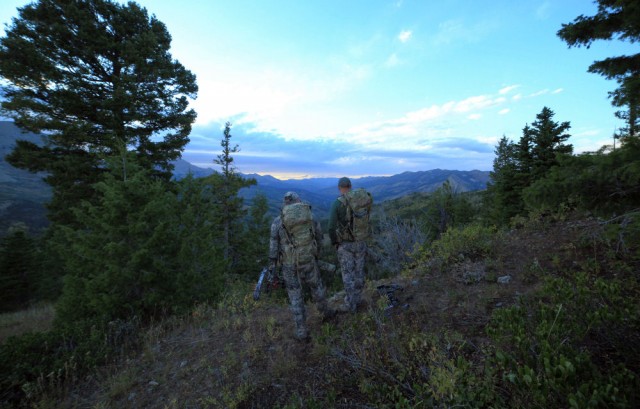 It’s no secret that if you are hunting an OTC/general tag on public land, you can expect some level of hunting pressure from other hunters. And, it is also obvious that if there is pressure from other hunters, it can affect the way the elk responds and reacts, especially to your calling. An elk that has been called in to a setup and winded a hunter becomes more wary each time he hears a bugle. It doesn’t mean he can’t be called in, but he recognizes pressure and the associated dangers. The more pressure the bull receives, the less likely he is going to be to come in, even if he is generally vocal and responsive.
It’s no secret that if you are hunting an OTC/general tag on public land, you can expect some level of hunting pressure from other hunters. And, it is also obvious that if there is pressure from other hunters, it can affect the way the elk responds and reacts, especially to your calling. An elk that has been called in to a setup and winded a hunter becomes more wary each time he hears a bugle. It doesn’t mean he can’t be called in, but he recognizes pressure and the associated dangers. The more pressure the bull receives, the less likely he is going to be to come in, even if he is generally vocal and responsive.
There are really only two ways to overcome this effect: hunt an area that doesn’t get as much pressure, or hunt that area earlier in the season. Every day of season brings more human encounters to the elk, so the later in the season you hunt, it’s that much more likely that the bulls will have been pressured. If you can’t change when you hunt (locked in vacation time, seasons, etc.), you have to change how and where you hunt; go deeper to find less-pressured areas, look for over-looked pockets where elk might receive less pressure, or slip in closer to the elk and then adjust your aggression based upon each elk’s attitude.
2. Young Bull Running in Fear
Early in the season, it’s not uncommon for the younger, less mature bulls to be the first ones to get to the cows. I sometimes laugh, because it really seems like the big herd bulls sit back and let the smaller bulls do all the work of rounding up the cows. These younger bulls run around thinking they are the herd bulls, but once the actual rut kicks in, the big bulls show up and take over. They do the breeding, then ride off into the sunset.
Oftentimes, I’ve seen young bulls who have found themselves at the head of the herd that are scared to death to lose their cows, especially the closer it gets to the actual rut. Knowing they don’t stand a chance of surviving a battle with a more mature herd bull, the younger bulls become accustomed to running away from potential fights. In my experience, this situation is probably the least likely of the four I mentioned. However, it is worth mentioning, as an adjustment to tactics and an understanding of the bull’s thought process can bring success.
In these cases, if a young bull has cows and hears several more cows, he will get excited. If he bugles in his excitement, then gets cut off by an aggressive challenge bugle, he might flee the scene. If, on the other hand, he hears a wimpy bugle, not unlike his own, he might have enough courage to come in and try his hand at securing a few more cows. Again, you need to put yourself into the elk’s mindset. Why would this bull be running? What do you need to do to convince him to come in and what can you do to ease the concerns that are making him run away in the first place?
3. The Mature Herd Bull is Focused on Breeding
A few years ago, Dirk, Donnie, and I were hunting in Wyoming on a general archery tag. The area we chose to hunt that season had plenty of pressure, but we were confident in our ability to get away from the crowds and find the elk. To some degree, we were able to do both. However, we struggled for 8 days to actually call an elk in. We heard hundreds of bugles each day, but pulling the bulls away and into our setups was difficult. In fact, it was one of the most difficult hunts I have ever been on.
We were hunting during the peak of the rut. Cows were in estrous, and the bulls were screaming their heads off. It should have been a dream hunt, and except for the fact that we didn’t fill an elk tag, it was a crazy good hunt. But for someone who loves calling elk, it was incredibly difficult to set my elk calls down.
We followed bugle after bugle, day after day, from the bottom of the mountain, all the way to the top. No matter how convincing we sounded, we could not get a bull to come away from the herd and come to our calls. Even the younger bulls were glued to the herd, trying like crazy to slip in and steal away a cow.
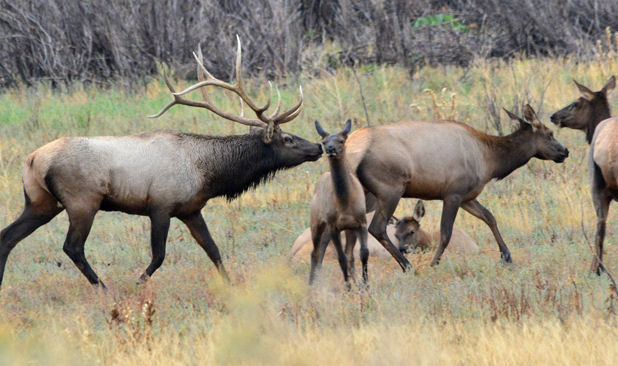 The cows were in estrous, and they had the bull’s full attention. Turning his attention to anything other than those cows that were right in front of him could lead to another bull stealing his cows, so the herd bulls simply weren’t taking any chances. Finally, after slowly recognizing – or at least admitting – that calling wasn’t the most effective tactic, we changed it up and had better luck.
The cows were in estrous, and they had the bull’s full attention. Turning his attention to anything other than those cows that were right in front of him could lead to another bull stealing his cows, so the herd bulls simply weren’t taking any chances. Finally, after slowly recognizing – or at least admitting – that calling wasn’t the most effective tactic, we changed it up and had better luck.
I found two things that seemed to work in this situation. First, I went completely quiet other than using the calls to locate an elk if needed. Once I had an elk located, I just followed the herd up the mountain. I was able to get in close to several elk, and as badly as I wanted to call, I didn’t. From there, it became simply a matter of putting myself in a position that would increase my chances of the bull chasing a cow by me, or just getting close enough to get a shot without being detected.
The other thing that I found effective was raking. I was able to pry a couple herd bulls away from their herds with nothing more than raking. If I added a call – cow call or bugle – the bull would immediately retreat back to his herd. But if I solely raked a tree, the herd bulls seemed more likely to come in to check me out.
4. DANGER!
The number one reason I’ve found for elk remaining vocal but running away is when their senses become aware of danger. I can’t tell you how many stories I’ve listened to from frustrated hunters who talk about elk just moving away from their calling for “no reason”. When I ask what direction the wind was going, they brush it off and blame it on “call-shy” elk. Or, on the herd bull that just can’t be called in.
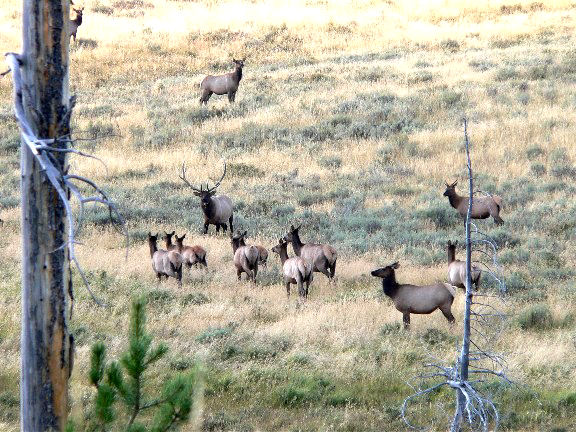 Most elk hunters don’t pay attention to the wind nearly enough. You will never beat an elk’s nose if even the slightest breeze or thermal is moving toward them. I’m sure there will be one or two people reading this that will have an example of when they had an elk walk right up to them with the wind at their back, but do not rely on this or hope it will work for you. Pay attention to the wind.
Most elk hunters don’t pay attention to the wind nearly enough. You will never beat an elk’s nose if even the slightest breeze or thermal is moving toward them. I’m sure there will be one or two people reading this that will have an example of when they had an elk walk right up to them with the wind at their back, but do not rely on this or hope it will work for you. Pay attention to the wind.
Beyond their sense of smell, an elk’s sense of sight and hearing can disrupt even the most stealthy of approaches from hunters. I’ve actually heard other hunters talking in audible voices from 200 yards away as they hike along a ridgetop calling down to the elk. Elk can hear far better than I can, and they know what humans sound like. And they associate the sound of humans with danger. Be mindful of the noise you make, and give the elk more credit than you want to for their sense of hearing. Any unnatural sound can alert them to danger, and make them intensely aware of their surroundings, which will make them far less likely to come in to your calls. Additionally, any natural sound can alert them to your exact location. If they are expecting to see another elk standing there and they don’t, they are going to be more likely to be wary than curious.
Lastly, pay attention to your movements as you close the distance on elk. A straggling spike or cow that is lagging behind the herd might see you and quietly run to the herd to alert them of danger. From there, it will be hard to convince the rest of the elk that there isn’t danger behind them.
Summary
In a nutshell, if an elk isn’t vocal, or if it is vocal but won’t come in, there is a reason. The more you understand how an elk thinks, and recognize why it won’t come in, the more readily you’ll be able to adjust and overcome these challenges. When it comes to elk calling and elk hunting, it’s far more important to understand the “why” rather than the “how”. In every situation, there is a “why”. With the understanding of why an elk is bugling and running or why an elk isn’t being vocal, it becomes much easier to apply the solution (the “how”) in multiple situations.
Looking back on your past experiences, “why” do you think the bulls have bugled and ran away from your calls? What changes can you make to overcome these challenges?
